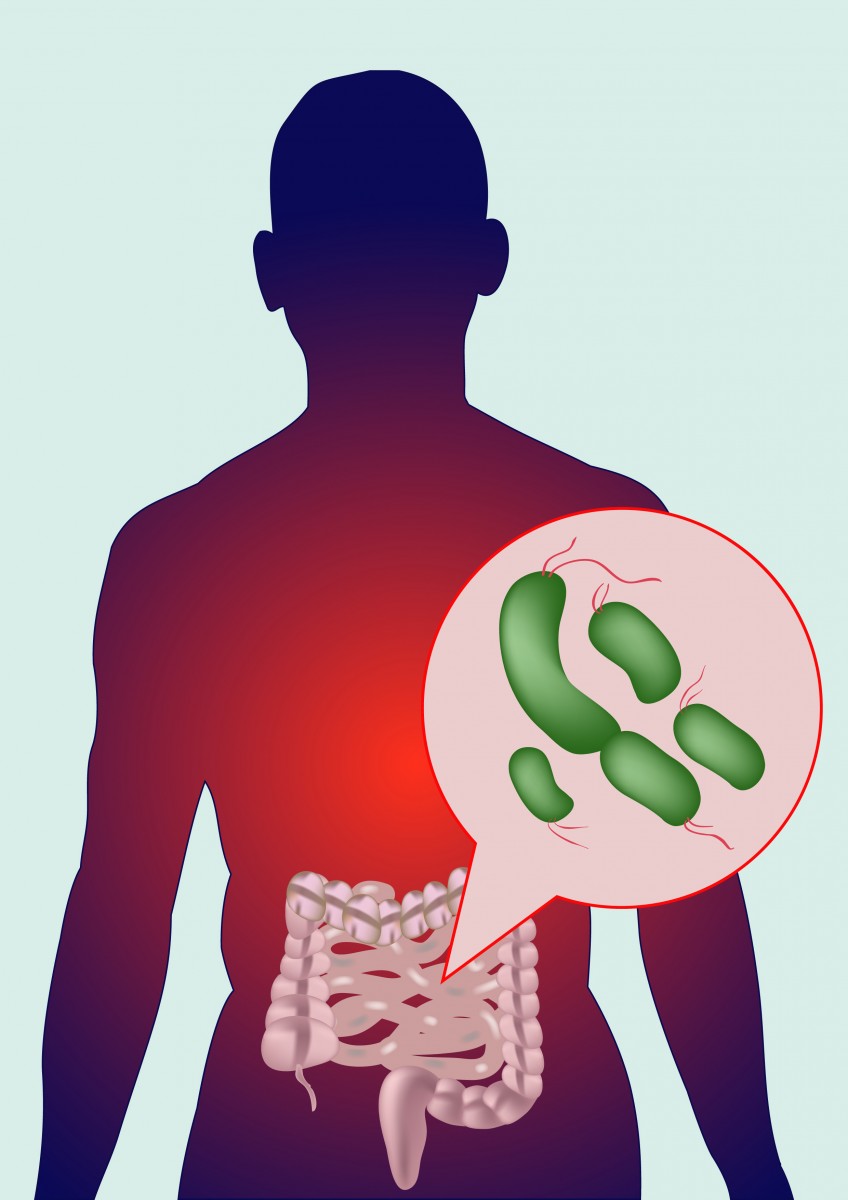In a new study entitled “Dysbiotic gut microbiota causes transmissible Crohn’s disease-like ileitis independent of failure in antimicrobial defense,” researchers report to have found that bacterial imbalance in the gut of mice causes gut inflammation, similar to the one that characterizes human Crohn’s disease. The study was published in the journal Gut.
Crohn’s disease (CD) is one of the main forms of Inflammatory Bowel Disease (IBD) and is characterized by inflammation that can affect any part of the gastrointestinal tract, but mainly affects the terminal ileum of small intestine and proximal colon. Recent studies suggested that dysbiosis (i.e., a microbial imbalance) of the intestinal microbiota is associated with CD.
In this study, researchers at the Technische Universität München (TUM) aimed to determine if indeed bacterial community imbalance could trigger chronic small intestinal inflammation. To this end, researchers used a mouse model for chronic CD-like ileitis (i.e., inflammation of the ileum), the TNFdeltaARE mice. The team used germ-free (GF)-TNFdeltaARE mice (germ free indicates mice that have no microorganisms living in or on them) and discovered that these mice are protected from intestinal inflammation. However, when these mice were transplanted with disease-associated microbiota, they developed CD-like ileitis, while if transplanted with healthy microbiota the inflammation phenotype does not occur.
As noted by Prof. Dirk Haller, TUM Chair of Nutrition and Immunology and study lead author “Although we used mice that had an increased genetic disposition towards Crohn’s-type inflammation, they did not develop symptoms until we implanted the intestinal bacteria of affected animals.”
The team performed further studies and analyzed the intestinal microbiota species, discovering that the disease-phenotype is not caused by individual bacteria, but rather by how the general composition of the intestinal microbiota communities. “It has a lot more to do with the bacterial communities present. It would appear that some combinations of bacteria are ‘dysbiotic’ — or imbalanced – and their characteristics can now be explained,” Haller explained.
The authors focused also on determining properties of the intestine cell wall. Paneth cells’ death, important immune defense cells sitting at the small intestinal wall, was a phenomenon previously known to also characterize Crohn’s disease. The team discovered that the death of Paneth cells is actually a consequence of inflammation triggering, since it occurs after ileitis development, and not its cause, as previously suggested.
In sum, the authors highlight that their findings show how imbalances in microbiome intestinal composition can trigger intestine inflammation, typical of CD, exacerbated by follow-up failure of Paneth cell function. They hope their findings will aid on the development of new therapies for Crohn’s disease.
Haller noted, “In most cases, the inflammation returns after a time. Stool transplants have already proven effective for a number of intestinal diseases. However, this unusual treatment has yet to deliver conclusive results in patients with Crohn’s disease and ulcerative colitis. The findings from our study will help provide a scientific basis for improving this approach — and then it could work.”

